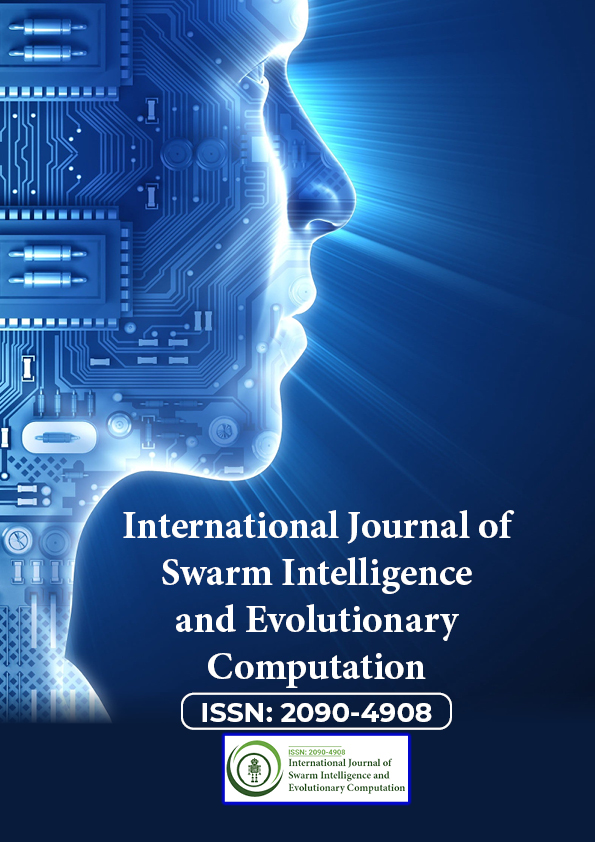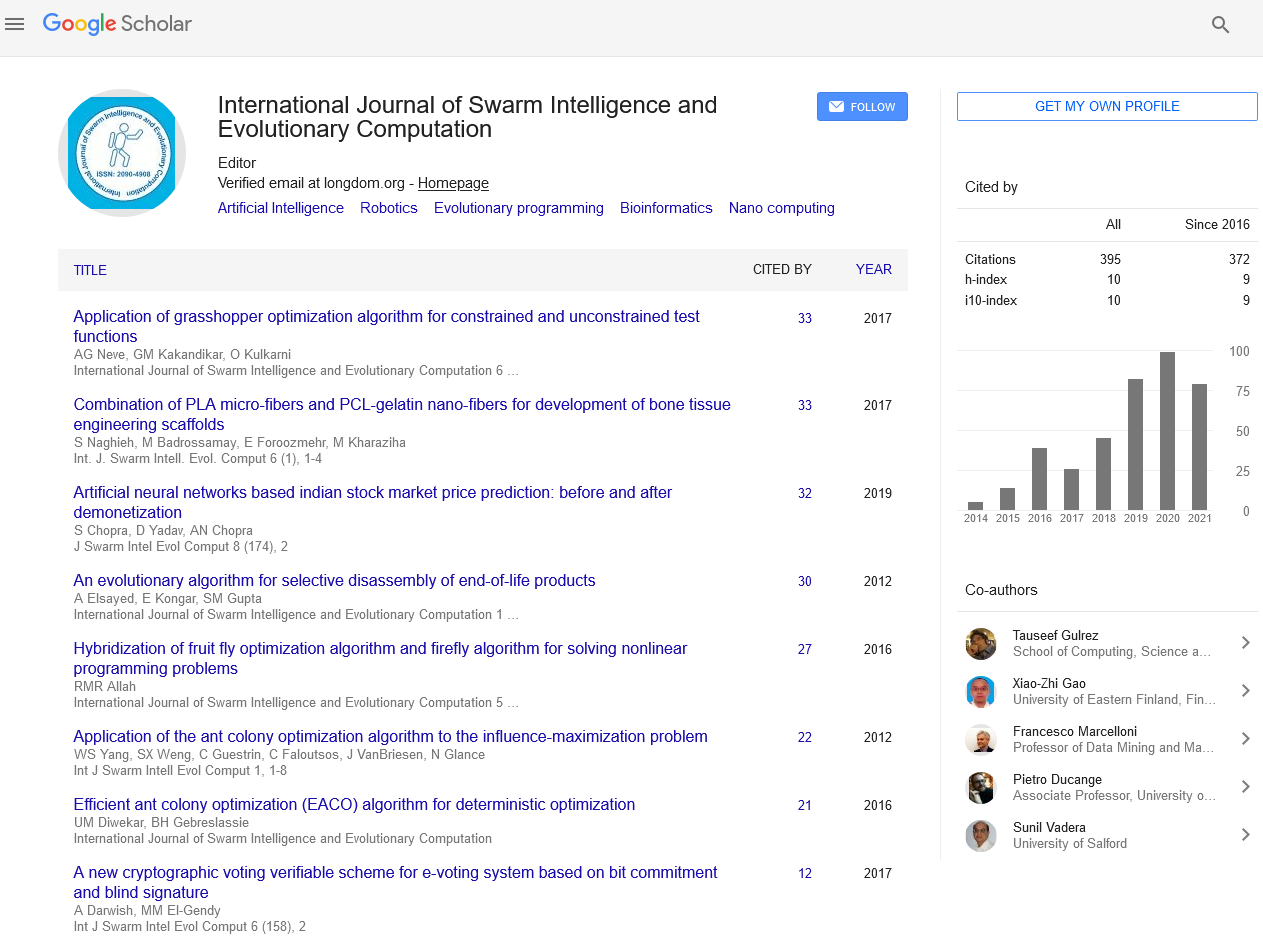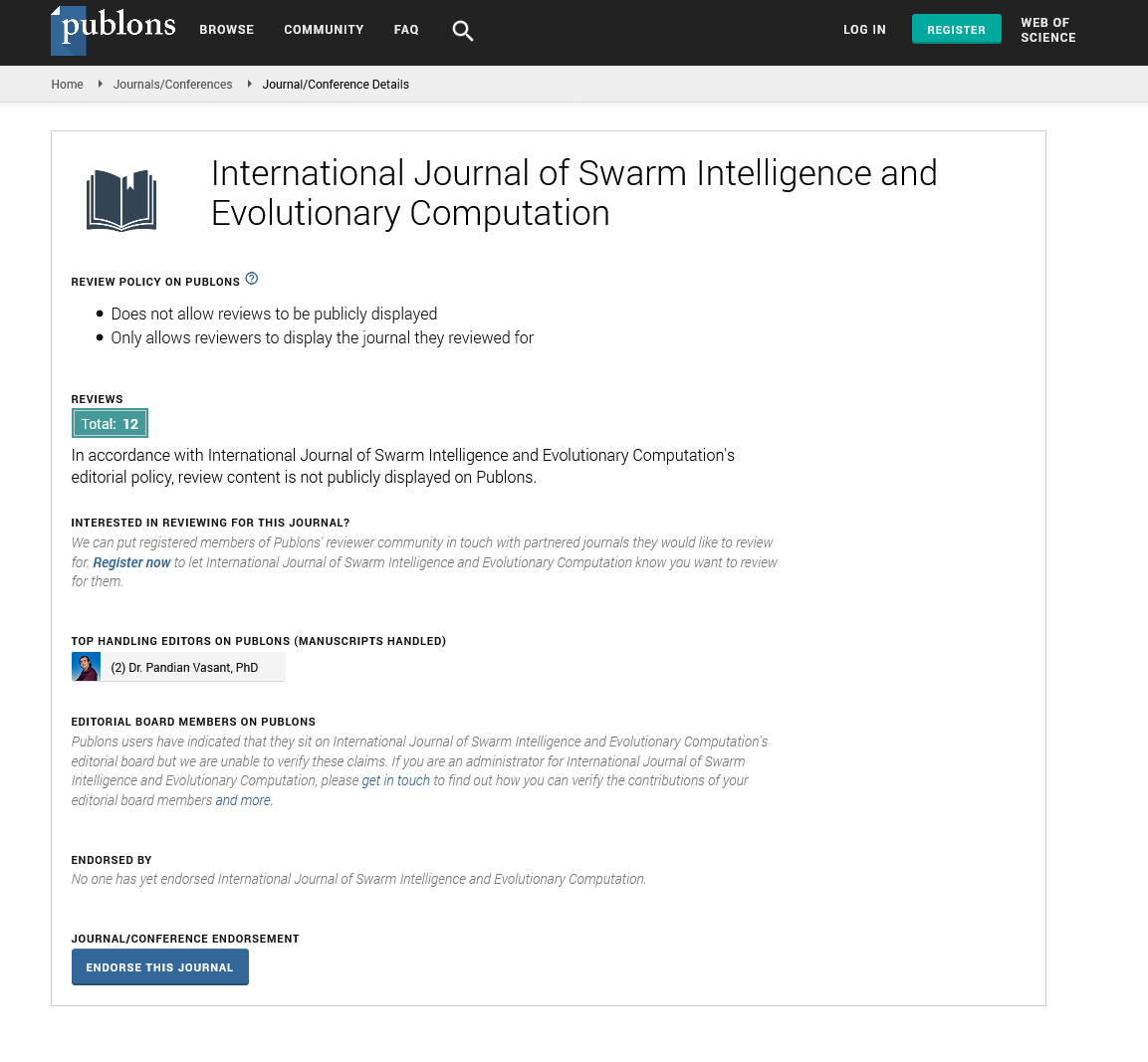Indexed In
- Genamics JournalSeek
- RefSeek
- Hamdard University
- EBSCO A-Z
- OCLC- WorldCat
- Publons
- Euro Pub
- Google Scholar
Useful Links
Share This Page
Journal Flyer

Open Access Journals
- Agri and Aquaculture
- Biochemistry
- Bioinformatics & Systems Biology
- Business & Management
- Chemistry
- Clinical Sciences
- Engineering
- Food & Nutrition
- General Science
- Genetics & Molecular Biology
- Immunology & Microbiology
- Medical Sciences
- Neuroscience & Psychology
- Nursing & Health Care
- Pharmaceutical Sciences
Commentary - (2024) Volume 13, Issue 6
Pheromone Trails and Artificial Intelligence: The Mechanics of Ant Colony Optimization
Jianghong Xu*Received: 25-Oct-2024, Manuscript No. SIEC-24-27729; Editor assigned: 28-Oct-2024, Pre QC No. SIEC-24-27729 (PQ); Reviewed: 11-Nov-2024, QC No. SIEC-24-27729; Revised: 18-Nov-2024, Manuscript No. SIEC-24-27729 (R); Published: 25-Nov-2024, DOI: 10.35248/2090-4908.24.13.405
Description
Ant Colony Optimization (ACO) is a nature-inspired optimization algorithm that draws its principles from the behavior of real ants. This method is based on the way ants communicate with each other and find the shortest paths to food sources using pheromone trails. In nature, ants deposit pheromones as they travel and over time, the intensity of these pheromone trails guides other ants in choosing paths. Stronger pheromone trails attract more ants, reinforcing the path, while weaker trails tend to fade away. This process enables the colony to find the most efficient route from their nest to a food source and this self-organizing behavior has been enhanced in the world of Artificial Intelligence (AI) to solve complex optimization problems.
The core idea of ACO is to simulate this natural process of pheromone deposition and evaporation in an artificial setting. In a typical ACO algorithm, a population of artificial "ants" explores a solution space, leaving behind virtual pheromones on their paths. These pheromones represent the desirability of a solution, guiding other ants toward better solutions based on the collective knowledge of the colony. Over time, the pheromone trails guide the ants to converge on the optimal or near-optimal solution to the problem at hand.
The mechanism of pheromone updating in ACO plays an important role in the efficiency of the algorithm. As ants explore the solution space, they deposit pheromones that indicate the quality of the solution they have found. The amount of pheromone deposited is typically proportional to the quality of the solution, meaning that better solutions receive more pheromone and thus attract more ants. At the same time, pheromone evaporation occurs, which ensures that outdated or suboptimal solutions gradually lose their influence over time. This combination of reinforcement through pheromone deposition and the natural decay through evaporation enables the ACO algorithm to balance exploration (searching for new solutions) and exploitation (focusing on promising solutions).
ACO has proven to be particularly effective in solving combinatorial optimization problems, such as the Traveling Salesman Problem (TSP), vehicle routing and scheduling. These problems involve finding an optimal arrangement of elements and the solution space can be vast and complex. By simulating the collective intelligence of ants, ACO can efficiently navigate this large solution space, often outperforming traditional optimization methods like gradient descent, especially in nonlinear and discrete problem settings. The ability to adaptively search for optimal solutions, while avoiding local optima, is one of the key strengths of ACO.
One of the most notable features of ACO is its ability to dynamically adjust to changing conditions. This is because the pheromone trails are continuously updated based on the ants’ experiences. In real-world applications, where conditions may change or new constraints are introduced, ACO’s flexibility allows it to adapt without needing to restart the optimization process. For example, in the case of vehicle routing, if a road becomes closed due to traffic or construction, the pheromone trails can be updated to reflect this change, enabling the system to quickly adjust and find a new optimal route.
Pheromone Trails and Ant Colony Optimization offer a unique perspective on optimization problems by simulating the natural behaviors of ants. The ability of ACO to balance exploration and exploitation, adapt to changes and solve complex combinatorial problems has made it a powerful tool in AI. While challenges remain in fine-tuning its parameters and applying it to different problem types, the continued development of ACO-based methods promises to unlock new possibilities in optimization and problem-solving across diverse industries.
Citation: Pheromone Trails and Artificial Intelligence: The Mechanics of Ant Colony Optimization. Int J Swarm Evol Comput. 13:405.
Copyright: © 2024 Xu J. This is an open-access article distributed under the terms of the Creative Commons Attribution License, which permits unrestricted use, distribution and reproduction in any medium, provided the original author and source are credited.


